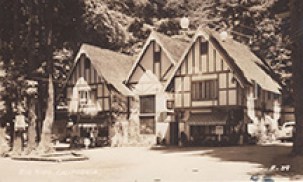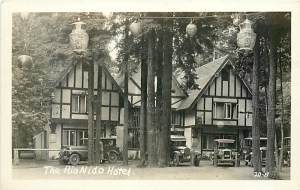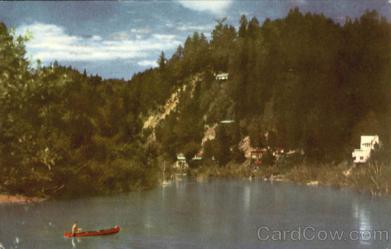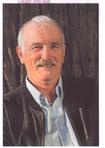John Michael McCarty's Blog, page 17
April 28, 2016
Rio Nido Lodge along the Russian River:
The Rio Nido Lodge along the Russian River in rural Sonoma County is over one hundred years old and has been with us since the railroad days. One way to get to Rio Nido was by flatboat from San Francisco’s Embarcadero and up the Petaluma River. The S.F. & North Coast Line would take you from the train depot at Donahue’s Landing (known today as Gilardi’s Marina near the old Papa’s Taverna restaurant on Lakeville Highway) to the junction at Fulton and River Roads. From there the Northwestern Pacific Railroad would deliver you to your vacation hideaway along the Russian River.
Claire Harris (who operated Johnson’s Beach in Guerneville for 48 years until 2015) remembers that the Friday night trains were crammed with tourists. Those who came by car traveled by way of Forestville and Pocket Canyon, across the Guerneville Bridge and headed east on a narrow dirt road beside the tracks.
Rio Nido Lodge, a brief history:
Harry Harris (Claire’s father) operated the hotel, nearby tent cabins and approximately 130 cottages. The lodge featured an Italian cuisine with a cabaret lounge where piano keys clicked and the martinis flowed. The attire was casual but no swimwear was allowed inside. During the day, tables were set aside for card games such as Pedro (which originated in the Mission District of S.F.). The last train out of the area was in 1935 but the fun kept rolling with the Big Band sound. There was a “house band” in residence ($30 per week) and they ate in the dining room. When Harry signed on with Music Corporation of America, it was not unusual to see the greats of the day playing unannounced at the piano. Harry James tops the list but to everyone’s disappointment he did not bring his wife, Betty Grable, along. Woody Herman, Ozzie Nelson, Phil Harris and others not only entertained the folks at the nearby dance hall but fraternized with patrons at the lodge. It was a quaint place where for a short time you were able to coexist and be an equal with some of the great musicians of all time.
Brett and Yulia Gibbs traveled from Russia to the Russian River to purchase the eleven-room hotel. Have we come full circle from the days of Fort Ross in 1812? We wish the family udachi (good luck) in their new venture.
rionido.net/wp-content/gallery/postca...
The post Rio Nido Lodge along the Russian River: appeared first on John McCarty.
April 24, 2016
Russian River of Yesteryear
The Russian River in rural Sonoma County was THE vacation spot for us City kids. Only seventy miles from San Francisco, the area provided a sunny haven from those fog-bitten summers. It felt like the entire world was a cookie jar, and you never got caught. One adventure after another waited for us. Trolling for chicks along the banks was a favorite hobby. God forbid that one of the girls should test our bravado and say hello. What then? But for the unseasoned “cruiser”, the Russian River was the perfect place to hone your skills. Trial by fire (the fire being the unrelenting punishment by God in the form of eternal guilt).
During the summer of 1953, I remember Harry James and His Music Makers were playing for the last time at Rio Nido. The Big Band sound was not my thing. Even as an eight-year-old, singers like Roy Orbison and Bill Haley rocked my world with their sinful music. But Harry James’s jazzy style would provide the background music for my first kiss. It was behind the four-lane outdoor bowling alley. Of course, I had to bring witnesses. I brought three for insurance. Francis was her name. It was a delightful kiss done with the utmost propriety. Damn. Years later, my friends would tease me, saying I had kissed Francis the Talking Mule (named after an old-time movie). Poor Francis. She deserved better.
Russian River, Memories That Linger:
But times changed for Rio Nido The bowling alley, the pinball arcade, the bingo parlor, the dance hall, the soda fountain and of course the beach all vanished. The muni-green cabins were left abandoned and squatters took advantage. But that’s for another novel (coming soon-Don’t Stop the Music). In addition, other venues and inventions captured our interest back in the fifties. Commercial airlines had become viable options, swooping you up and delivering you to Las Vegas or Hawaii. Highway 80 had been completed, offering easy access to the “Biggest Little City in the World”. The suburban malls held yet another distraction where trolling became an art form. In addition (and certainly not last), Lucy and Howdy Doody and the Lone Ranger visited our living rooms via a magic screen. Distractions-they became plentiful.
But wait, there might be a happy ending. Only time will tell, but the Russian River appears to be undergoing a renaissance of sorts. Restaurants have been featured in the New York Times and the Sunset magazine. AAA has declared Guerneville a “food destination”. Fourteen art galleries festoon Main Street and nearby lanes. Jazz and Blues and Rock rattle our cages. And what about Rio Nido? It too is poking its beautiful head above ground. The old lodge is under new and vibrant management. The residents have kept alive old traditions and continue to inspire fresh ones. Have new temptations risen from the ashes? I certainly hope so.
Until next time, my friends, keep turning those pages.
The post Russian River of Yesteryear appeared first on John McCarty.
April 22, 2016
Charles Manson
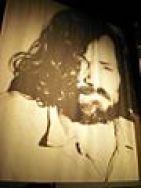
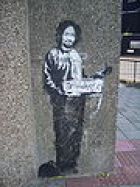
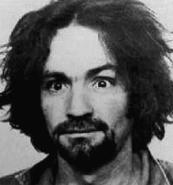 Charles Manson was born in 1934 and enjoyed a brief career as a song writer, which had been influenced by a chance association with Dennis Wilson, drummer and co-founder of the Beach Boys. But the devil soon took hold and he became the master of the creepy and the macabre. By the time he strolled into the Haight Ashbury District of San Francisco during the Summer of Love, he was already a seasoned criminal.
Charles Manson was born in 1934 and enjoyed a brief career as a song writer, which had been influenced by a chance association with Dennis Wilson, drummer and co-founder of the Beach Boys. But the devil soon took hold and he became the master of the creepy and the macabre. By the time he strolled into the Haight Ashbury District of San Francisco during the Summer of Love, he was already a seasoned criminal.
One day in 1967, I drifted down from my apartment on the corner of Hayes and Stanyon to investigate the latest goings-on. Standing on an orange crate in the Panhandle was this scruffy, wired dude preaching and singing on the merits of an all-white society. Four wide-eyed girls gazed at him with this far away look as if he was the next coming. But for the rest of us, the name Charles Manson meant little. He was nothing unusual at the time. After all, the Haight was full of castaways, leftovers, and drifters of every species. And then there was the summer along the banks of the Russian River where everything started to get twisted for Mr. Manson.
Charles Manson at the River:
My source tells me that in 1969 he was walking along a sparsely inhabited section of beach near Guerneville (where Burke’s retrieves their canoes) and came across a guy with a couple of female friends, all of whom were wearing their one-piece birthday suits. The stranger invited my source to party with them but he declined as his instincts kicked in. In the local newspaper the next day, there was a photo of the man. It was Charles Manson and he had been arrested on suspicion of two murders the previous night. One of the victims was found in a plastic bag, alive but with a .22 in his belly. The bullet degraded to the point where lead poisoning had taken over. He died en route to a hospital in Santa Rosa.
Charles Manson had turned the Beatles’ song, “Helter Skelter”, upside down and infused it with apocalyptic racial overtones. The Manson family committed nine killings over a five-week period during that fateful summer of 1969. Fortunately, my source was not counted among the victims. It wasn’t until the Sharon Tate killing(s) in 1971 that a murder decision was finally rendered. Since 1949, Manson has spent all but four years behind bars.
If you wish to send Charles Manson some chocolate chip cookies, you can reach him at Corcoran State Prison in Corcoran, Ca. Until next time, keep turning those pages. Hasta la vista, my friend.
https://en.wikipedia.org/wiki/Charles...
The post Charles Manson appeared first on John McCarty.
April 16, 2016
Haight Ashbury in the sixties
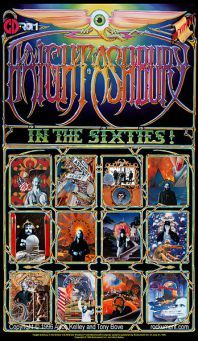
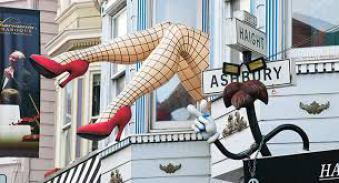
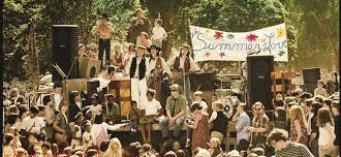 The Haight Ashbury in the sixties was THE playland for the insane and want-to-be’s. Nothing wrong with that. We had plenty of guidance, all done to the beat of rock ‘n’ roll. Jefferson Airplane lived at 2400 Fulton while the Dead were just five blocks away at 710 Ashbury. If that wasn’t enough, other neighbors included Janis & Big Brother, who were in separate quarters along Oak Street in the Panhandle. Peter Coyote (later known for his films) helped to establish the Diggers, a group of anarchists with a wild hair up their wazoo. While researching for my next crime novel, Don’t Stop the Music, I found out that they believed in a society without the interference of government. A system of bartering took hold in the Haight where food, clothing, housing, medical needs, music and even advise were freely distributed.
The Haight Ashbury in the sixties was THE playland for the insane and want-to-be’s. Nothing wrong with that. We had plenty of guidance, all done to the beat of rock ‘n’ roll. Jefferson Airplane lived at 2400 Fulton while the Dead were just five blocks away at 710 Ashbury. If that wasn’t enough, other neighbors included Janis & Big Brother, who were in separate quarters along Oak Street in the Panhandle. Peter Coyote (later known for his films) helped to establish the Diggers, a group of anarchists with a wild hair up their wazoo. While researching for my next crime novel, Don’t Stop the Music, I found out that they believed in a society without the interference of government. A system of bartering took hold in the Haight where food, clothing, housing, medical needs, music and even advise were freely distributed.
Haight Ashbury: A brief history
Haight Ashbury during the late sixties saw the introduction of the Free Store at 1090 Cole Street where you could find bell bottoms, beads, eight track tapes, patchouli oil, or a red ribbon for your hair…at no charge. The Free Clinic at 409 Clayton, on the corner of Haight, was run by Dr. Smith from UCSF. No fee for the treatment or the sideshow. On a bad trip, patients tried to throw themselves out the lobby window or a couple could be seen locked together in love (penis captivus). The Hells Angels would direct the homeless to The Switchboard at 1830 Fell where operators would find them shelter in one of the communal Victorians. The leather shop at Xanadu, the I/Thou Coffee Shop, the Psychedelic Shop and the Pacific Ocean Trading Company were just some of the other local hangouts. The Straight Theater’s house band was Big Brother, but all the greats played there. Out on the street and in the park, the music flowed free and easy.
But the dream would fade quickly. One hundred thousand drifters (midwest teens, Vietnam Vets, college kids, and curiosity seekers) would invade the Haight during the Summer of Love in 1967, overwhelming the neighborhood’s resources. The district was ravaged by pimps, drug dealers and the greedy. By the fall this oasis had become a wasteland, ruled by opportunists. Love was all there was until there wasn’t any. Until next time keep the peace, my friend.
The post Haight Ashbury in the sixties appeared first on John McCarty.
April 14, 2016
Jefferson Airplane
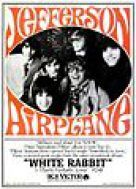
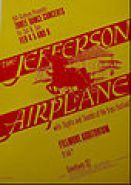
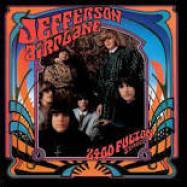 Back in the late sixties, I lived a block from the Jefferson Airplane. They resided at 2400 Fulton Street near St. Ignatius Church in San Francisco. How close these rock ‘n’ rollers aligned themselves with God is unknown. The fact that their three-story Colonial Revival was painted black might be an indication. While doing research for upcoming crime novel, Don’t Stop the Music, I unearthed the fact that the address on Fulton would later become the title for their 1987 album, which included such hits as “Somebody to Love” and “White Rabbit”.
Back in the late sixties, I lived a block from the Jefferson Airplane. They resided at 2400 Fulton Street near St. Ignatius Church in San Francisco. How close these rock ‘n’ rollers aligned themselves with God is unknown. The fact that their three-story Colonial Revival was painted black might be an indication. While doing research for upcoming crime novel, Don’t Stop the Music, I unearthed the fact that the address on Fulton would later become the title for their 1987 album, which included such hits as “Somebody to Love” and “White Rabbit”.
Jefferson Airplane: A brief history
The Jefferson Airplane made their debut at a San Francisco nightclub in August of 1965. Grace Slick would join them a year later, propelling them onto the national scene and onto the front cover of Life magazine. I saw them at both the Fillmore Auditorium and the Straight Theater. Or at least that’s what I’m told. Tripping on acid and dancing amidst a rainbow of colors and images, it was difficult to distinguish between reality and fantasy. But my diary reminds me that the band thumped out their harmonies alongside some of the all-time legendary groups. The Grateful Dead, Santana, Jimi Hendrix, The Doors, Credence Clearwater, The Who, Steve Miller and Big Brother all opened for the Jefferson Airplane. While there were some 500 bands in San Francisco at the time, they were the first Bay Area group to achieve international success. They went on to be headliners at the three most famous music festivals of the sixties: Monterey (1967), Woodstock (1969), and Altamont (1969). In 1972 they essentially split into two different bands…Hot Tuna and Jefferson Starship. But for this old, burnt-out piece of dirt, I’ll always remember them as they sat on the steps of their Fulton Street home, passing around a joint, nodding to me as if I was one of them. And for a brief psychedelic second, we all were.
The post Jefferson Airplane appeared first on John McCarty.
April 13, 2016
Apple Blossom Festival
This weekend – April 16th & 17th, 2016
Annual Sonoma County Apple Blossom Festival in Sebastopol, California
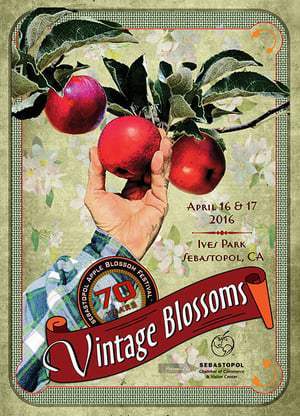
For more information: http://www.appleblossomfest.com/
The post Apple Blossom Festival appeared first on John McCarty.
April 2, 2016
Jerry Garcia & the Summer of Love
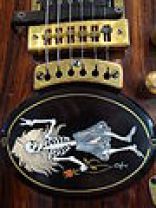
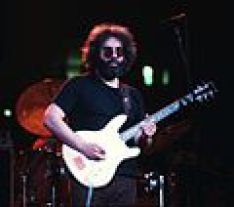 Jerry Garcia was a San Francisco kid through and through. He was raised in the tough Outer Mission by his grandmother who was a no-nonsense organizer for a local union. Jerry would hang out at his mother’s bar in the Embarcadero with hard-drinking longshoremen. In fact, his Irish legacy in the City goes back to the Gold Rush days. So you can see that perhaps he was more than a little miffed when Chief Cahill and Mayor Shelley and others referred to him as an “outsider”, but that was the way he and the Grateful Dead were treated during the Summer of Love in 1967.
Jerry Garcia was a San Francisco kid through and through. He was raised in the tough Outer Mission by his grandmother who was a no-nonsense organizer for a local union. Jerry would hang out at his mother’s bar in the Embarcadero with hard-drinking longshoremen. In fact, his Irish legacy in the City goes back to the Gold Rush days. So you can see that perhaps he was more than a little miffed when Chief Cahill and Mayor Shelley and others referred to him as an “outsider”, but that was the way he and the Grateful Dead were treated during the Summer of Love in 1967.
Jerry Garcia in the Haight:
At the time, I lived on the corner of Hayes and Stanyon, down the street from the Jefferson Airplane and a few blocks from Big Brother in the Panhandle. The Grateful Dead had moved into a thirteen-room Victorian at 710 Ashbury Street where the band embraced the neighborhood and where we included them as one of our own. Jerry Garcia and his boys would play for free in Golden Gate Park. They also provided rent-free space in their home for some of Vincent Hallinan’s young attorneys. The Haight-Ashbury Legal Organization (HALO) did pro bono legal work for runaways, draft dodgers and pot smokers. This did not sit well with the Irish establishment downtown.
One afternoon in October, I remember carrying for a sick woman when carloads of narcs invaded the Dead house across the street. Next, I saw Jerry and his girlfriend, Mountain Girl, who were ambling up the lane with their groceries. I leaned out the window and warned the duo. The city and state cops, however, did drag off Bob Weir and Ron “Pigpen” McKernan and a pound of marijuana. I can remember the Chronicle making a big fuss over the arrest, which was exactly what Jerry and his merrymakers wanted. The issue came to a crescendo with neighborhood delegations meeting with both Shelley and Cahill. We took care of one another until we weren’t allowed to. The Summer of Love was the beginning of the end as the old Irish brotherhood refused to cede control of its domain.
The above scene is narrated in my next novel, a historical crime tale of mobsters, musicians and politicians. Stay tuned for Don’t Stop the Music. Until then, keep the peace, my brother.
The post Jerry Garcia & the Summer of Love appeared first on John McCarty.
March 31, 2016
Janis Joplin
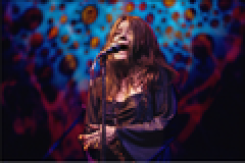
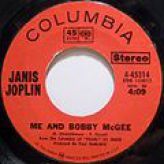 Janis Joplin seemed destined to experience and contribute to the full measure of the sixties…for better or worse. While doing research for my next crime novel, Don’t Stop the Music, I unearthed some rather interesting anecdotes. Soon after leaving the University of Texas (where she was misunderstood and voted “Ugliest Man on Campus”) she embarked on a music career and hooked up with Big Brother and the Holding Company as well as the Grateful Dead. They all lived together in Lagunitas up north in Marin County in 1965. The following year, Big Brother and Janis broke out of the local scene and were introduced to the world at the Monterey Pop Festival. While this propelled them onto center stage, their living arrangement reportedly introduced Janis to hardcore drug use.
Janis Joplin seemed destined to experience and contribute to the full measure of the sixties…for better or worse. While doing research for my next crime novel, Don’t Stop the Music, I unearthed some rather interesting anecdotes. Soon after leaving the University of Texas (where she was misunderstood and voted “Ugliest Man on Campus”) she embarked on a music career and hooked up with Big Brother and the Holding Company as well as the Grateful Dead. They all lived together in Lagunitas up north in Marin County in 1965. The following year, Big Brother and Janis broke out of the local scene and were introduced to the world at the Monterey Pop Festival. While this propelled them onto center stage, their living arrangement reportedly introduced Janis to hardcore drug use.
Janis Joplin, a brief history:
To prevent the devil from overcoming them, everyone left the bucolic environs of west Marin and moved into separate quarters in the Haight Ashbury of San Francisco in 1967. I experienced Big Brother and Janis several times at the Avalon Ball Room in the Polk Gulch neighborhood as well as at the Straight Theater in the Haight. Strobes and projectors covered Janis in a rainbow of images and color as she wailed out “Me and Bobby McGee” in her throaty, gritty style. She would play on the same bill as Jefferson Airplane (Jefferson Starship) and The Steve Miller Band and Quicksilver Messenger Service and Jimi Hendrix and Santana. The list was inexhaustible.
Janis loved mixing her drugs with sex and it didn’t matter which flavor or which gender. One day at the Big Brother’s Victorian in the Panhandle, Janis used some “brown sugar” to smooth out the edges from a LSD free-fall. Terence Hallinan, son of Vincent and a rising attorney in his own right, entered with his girlfriend and took his first shot of heroin. He started to convulse and dropped to the floor. Unperturbed, Janis dragged his girlfriend to the backroom and made love to her before returning to assist the unconscious Hallinan.
Drugs continued to be her pathway to creativity as she left Big Brother and become a solo artists with backup groups such as Kosmic Blues Band and Full Tilt Boogie Band. In a chat from yesteryear, Nick Gravenites (former member of Paul Butterfield Blues Band and current resident of Occidental in Sonoma County) told me that in October of 1970 he was rehearsing with Janis at the Sunset Sound Recorders in Los Angeles. That evening, she went back to her room at the Landmark Motor Hotel in Hollywood where she was later found dead from a drug overdose. The D.A.’s office assumed it was accidental as several of her dealer’s clients also O.D.ed that week.
Everybody took bits and pieces of her until there was nothing left. She worked hard for the industry and deserved the iconic title of “Queen of Psychedelic Soul”. May she rest with the angels, and may we continue to dance on the stage she helped to build. Peace.
The post Janis Joplin appeared first on John McCarty.
March 26, 2016
Hells Angels and the Summer of Love
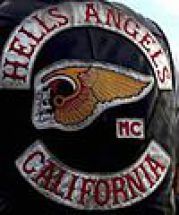
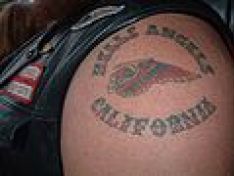 The Hells Angels and the Summer of Love seem at opposite ends of the spectrum, right? That’s what I thought before I started gathering data for my next novel, Don’t Stop the Music. Sonny Barger and his fellow bikers considered themselves caretakers of the Haight Ashbury when heaven appeared to have kissed the earth. In 1967 one hundred thousand kids, Vietnam Vets, drop-outs and curiosity seekers descended upon the neighborhood. The deluge was overwhelming and the Angels lent a hand. They provided free security for music concerts in Golden Gate Park and elsewhere (such as at Altamont Speedway, which went horribly twisted, but that’s another story). They aided Huckleberry House with the corralling of wayward children. The Diggers enlisted the Angel’s help with the distribution of free food, clothing and medical services. And this is where it gets interesting.
The Hells Angels and the Summer of Love seem at opposite ends of the spectrum, right? That’s what I thought before I started gathering data for my next novel, Don’t Stop the Music. Sonny Barger and his fellow bikers considered themselves caretakers of the Haight Ashbury when heaven appeared to have kissed the earth. In 1967 one hundred thousand kids, Vietnam Vets, drop-outs and curiosity seekers descended upon the neighborhood. The deluge was overwhelming and the Angels lent a hand. They provided free security for music concerts in Golden Gate Park and elsewhere (such as at Altamont Speedway, which went horribly twisted, but that’s another story). They aided Huckleberry House with the corralling of wayward children. The Diggers enlisted the Angel’s help with the distribution of free food, clothing and medical services. And this is where it gets interesting.
Hells Angels in the Haight:
An Oakland mobster by the name of Papa Al and his sidekick, Teddybear, tried to muscle in on the action at the Free Clinic in the Haight Ashbury during that fateful summer. Papa Al insisted on using the facility to sell his drugs, mostly speed and other amphetamines. Dr. Smith, founder of the medical outlet, called Sonny Barger when push came to shove. Sonny had a face-to-face meeting with Papa Al and supposedly told the thug never to set foot in the Haight again OR ELSE.
I couldn’t resist and have used these characters as well as the famous music producer, Bill Graham, as center pieces for Don’t Stop the Music.
The post Hells Angels and the Summer of Love appeared first on John McCarty.
March 24, 2016
Bill Graham
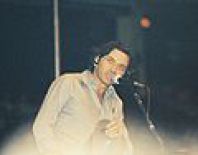
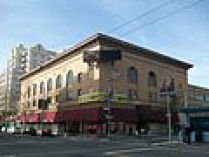 Bill Graham was a music promoter and a tough cookie. During my research for my next novel, Don’t Stop The Music, I realized that Graham’s thick skin was forged at an early age as a Jew in Germany during World War II. His mother and a sister were gassed by Nazis. At the tender age of nine he trekked across Europe alone and eventually found his way to Portugal, then Casablanca to Dakar and finally landing in New York where he ended up in an orphanage.
Bill Graham was a music promoter and a tough cookie. During my research for my next novel, Don’t Stop The Music, I realized that Graham’s thick skin was forged at an early age as a Jew in Germany during World War II. His mother and a sister were gassed by Nazis. At the tender age of nine he trekked across Europe alone and eventually found his way to Portugal, then Casablanca to Dakar and finally landing in New York where he ended up in an orphanage.
After serving in Korea, he worked as a New York cab driver before coming to San Francisco. It is here where I found some rather interesting facts that would take center stage for my historical fiction crime story.
Bill Graham, music promoter:
Charles Sullivan was a player and the top Black music promoter west of the Mississippi during the fifties. He had turned the Fillmore District of San Francisco into Harlem of the West. After-hours jazz clubs featured Miles Davis, John Handy, John Coltrane, Billie Holiday, Louis Armstrong, Thelonious Monk and so many more. Then one night in a dark alley in August, 1966, Charles Sullivan was found dead under very mysterious circumstances. The police ruled it a suicide, but the locals figured it was just another move by the powers to be to tear down the district. This is where my next novel starts. Sullivan leaves Graham his dancing license for the Fillmore Auditorium, but the young entrepreneur’s efforts to renew the permit are stonewalled. Tough and determined, Graham blackmails a crooked cop by taking pictures of him entering a brothel across the street from the dance hall. For further information go to Don’t Stop The Music.
Keep the rhythm going, baby!
The post Bill Graham appeared first on John McCarty.

